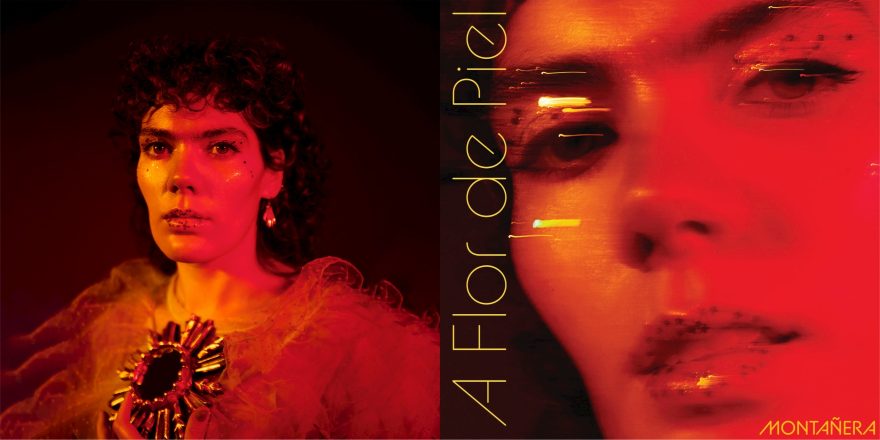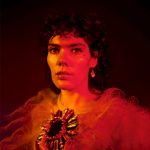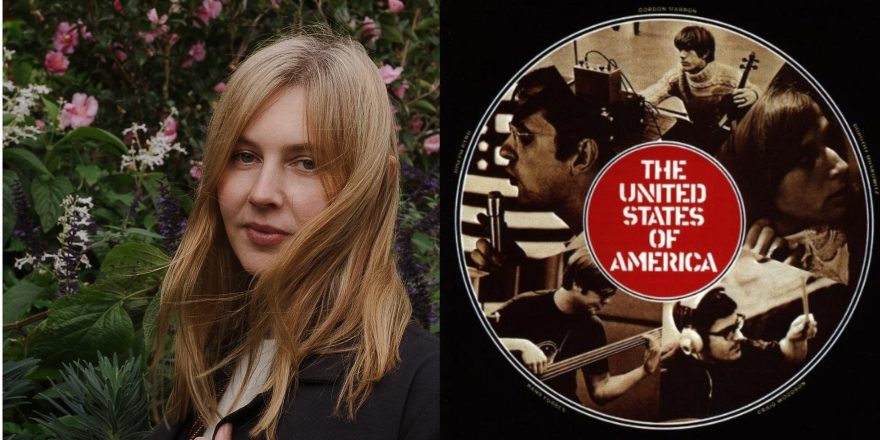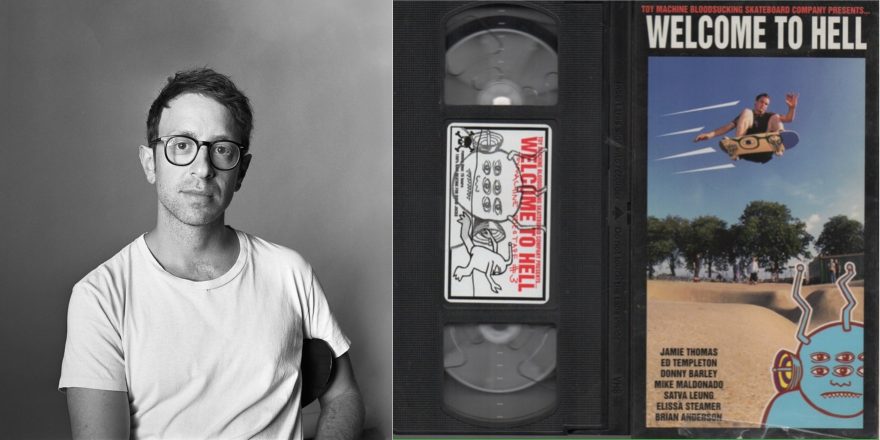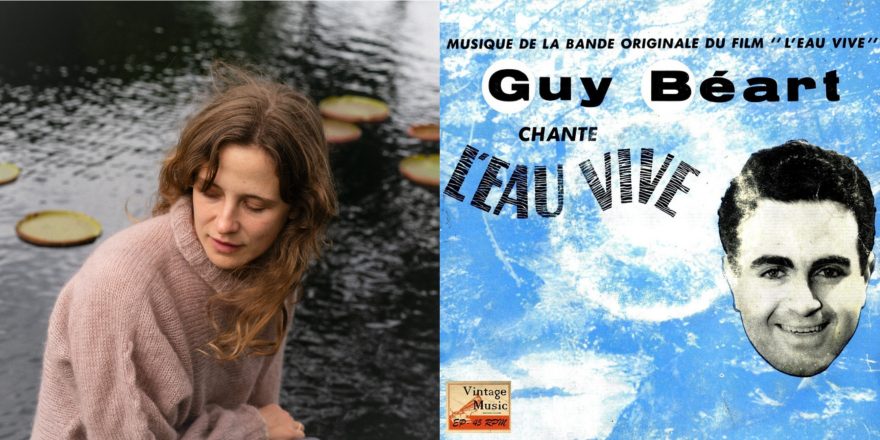I’m living in London, and I was doing a Masters in music. I started some lessons around Senegalese vocals, so I was learning traditional Senegalese songs, which were songs usually sung by griots. They’re musicians; it’s called being a griotess when you’re a woman musician. But they’re of a certain lineage, so you have to be born into a family of griots to be able to be a griot. Griots also have a very close relationship to the royalty of the countries, so it’s a very important and symbolic position to have.
I started learning some of the songs with a Senegalese griot called Kadialy Kouyate. I was super privileged to have him as a teacher. Initially, he just taught me the songs and I would sing them (I’m a singer; I studied it professionally back in Colombia). Then he started teaching me kora songs, and it was a whole process that blew my mind. I’d already been in touch a bit with Senegalese music before, but when he started teaching me the songs, I fell even more in love with the music.
Then I had another amazing teacher, Lucy Durán, who is one of the most important producers of Senegalese music. She heard me singing one day, and she asked me if I’d like to learn to play the kora. I was like, “Of course I’d love to play the kora!” So she gave me a kora as a present and started teaching me how to play it. She’s an amazing kora player. She also knows how to sing, because traditionally you would sing and play the kora at the same — which is why she told me, “You should learn to play these together. You cannot just sing, you should sing and play.”
This process lasted a year, and then at the end, I thought that I should incorporate the kora into my music somehow. For me, kora music has always felt very celestial. The rest of my music has a bit of that character — I’m very into ambient and experimental sounds, and it dialogues very well with the kora and its etherealness. So I started composing very simple patterns to play and sing. That’s how I came up with one of the songs on the album, “Me Suelto al Riesgo.”
When I write, I always have started from the voice. I’ll have a melodic element that comes to me, and then I start evolving that idea, and then I go to the instruments, the keyboard or the synths. But with the kora, it was the other way around. I just sat with the kora for quite a while and tried to make something that I could play — because it’s a very hard instrument, it has 21 strings. I tried to do something simple and repetitive. I really like repetitive music, because it gets your mind in a certain space, so I just sat there and repeated this pattern until I found the exact pattern that I liked. Then after that, I started trying to sing on top of what I was playing. The last part I wrote was the lyrics. Unconsciously, the lyrics started to talk about something I was going through at the time. It’s almost a song I made for myself, to remind myself that even though everything is chaos, it’s all going to be OK. It’s about letting go of control. It was nice, because I had been struggling to speak about that topic, but then when I had the kora pattern and the melody, somehow these lyrics just started coming out. It was very organic.
I have a lot of respect for traditional musics of the world; I’ve never even been to Senegal, sadly, so out of the respect I have, I really wanted to somehow honor their music and write a piece where I could integrate some of its sounds and the melodic structures — but I’m completely aware that I’m not anywhere close to being a professional kora player. But it was lovely, because I think it gave the album a very interesting sound.
The Senegalese influence is really just on that one song. Colombian influences have always been present in my music, even when it’s not explicitly obvious. I’ve been studying traditional Colombian music for a while, from both the Pacific and Caribbean coasts, and there are two songs on the album that are very much inspired by the genres of these coasts.
The first one is “Santa Mar,” and it’s a song inspired by one genre of the Pacific coast called currulao. This is a very, very special song to me. My Masters investigation was on how singing could be a tool for social healing in post-conflict communities; I was very interested in how the voice could be a tool for peace-building, specifically in Colombia, because we have this very long history of civil war. So I worked on the investigation with some women on the Pacific coast who are all traditional singers, but then I went to the territory and invited them to be on my album as well, and this song features them. The lyrics tell a bit, in maybe an encrypted way, about how these women are gifted with healing powers and have become peace-building agents in their territories without even knowing. Some of them do know, and do it in a more political and governmental way, but some of them are just doing it through music, and it has a lot of power. So I’m very lucky to have them on the album, and have this song as an end result of my investigation.
The other one is “Como Una Rama,” and it’s a song that’s inspired by a genre from the Caribbean coast called bullerengue. It’s a song where I was trying to invoke the powers of these traditional singers. There are so many incredible musicians and singers in Colombia, and they have such strength in their voices, that really inspires me as a singer, so on this song I wanted to sing in that way. I’ve been studying this music for a while, so I’m very much interested in trying to replicate the sound, how they project their voices, the type of sonic things they find in their voices and bodies. So it started like that — I started singing some melodies that I thought would be similar to their melodies, and the lyrics started speaking about that as well. The first line of the song says, “Just like a branch that grows from a tree, in the same way my voice grows from my chest.” Then I started constructing the whole song around this image.
Bullerengue is traditionally sung in choirs, so many women would be in a circle clapping their hands and singing as a group. So for this song, it’s all my voice, but we re-recorded myself many times in different spaces in the studio. Then the producers layered my voice in many different spaces and spectrums of the harmony. So it’s like a choir of my own self. It’s also a song that feels very spiritual for me, without explicitly saying it’s a spiritual song or anything.
Those are the songs that explicitly have these influences. People who read this might think that A Flor de Piel is a traditional music album, but it’s far away from that. If you listen to the rest of the album, it’s really more experimental, ambient pop. These three songs are particularly special to me, because of these influences. But it’s all in dialogue.
As told to Annie Fell.



